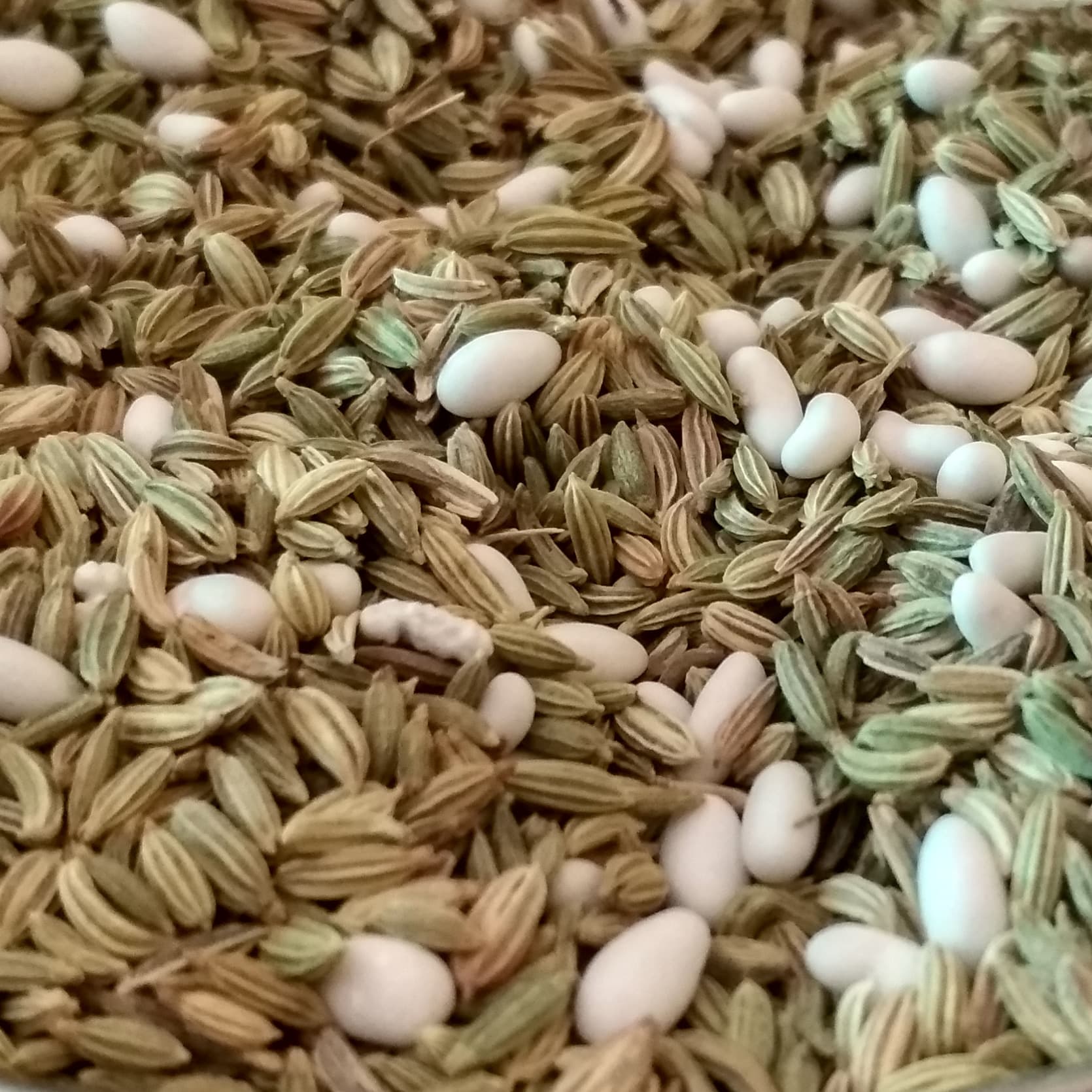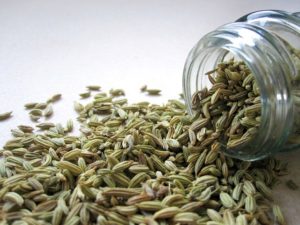Fennel seeds and beautiful green seeds that grow in picturesque bunches. They have a distinct taste of their own and are widely used in Indian Cuisine.
History :
It originated in Southern Europe and the Mediterranean regions. Currently grows mainly in the US, France, Russia, and India.
Scientific Name:
Foeniculum vulgare
Other Names:
Saunf ( Hindi/Punjabi ), Badishep ( Marathi), Badisopu ( Kanada), Madhurika ( Sanskrit )
Difference between fennel and cumin?
While both are spice and distantly related, they have their distinct differences.
Fennel is green, larger in size, sweeter in taste, and has a distinct taste/aroma. On the other hand, cumin is brown smaller in size and has an earthy flavour.
In terms of culinary use, Cumin is mainly used in savory dishes fennel is used in both sweet and savory dishes.
Nutritional & Health Benefits:
100 gm of the seeds give 345 kcal, 52.29 gm of Carbohydrates, 15.8 gm of Protein, 14.87 gm of fat, and 39.8 gm of fibre.
It is a source of many vitamins like Vit. A, K, B complexes, C, and minerals like calcium, magnesium, etc. It also contains fibre, antioxidants, and phytonutrients.
These seeds help to manage acidity, improve digestion, avoid bad breath, and reduce gas. They are used widely in traditional medicine and home remedies.
Culinary Usage:
- Tea
- Sweet dishes like Ice creams, kheer.
- Savoury dishes like soups, salads, bread
- Beverages like Variyali
Why do people consume Fennel post-lunch?
- It is a coolant.
- Saunf acts as a mouth freshener.
- It aids digestion and prevents gastric issues like gases, bloating, etc.
- To replace the aftertaste of food.
Summary
While Fennel has a lot of benefits, being mindful about how much is consumed is very important. Avoid overuse, just because it is beneficial.
Reference
- https://www.ncbi.nlm.nih.gov/pubmed/22393831
- https://www.ncbi.nlm.nih.gov/pubmed/12868253



Exact information you have shared! Well, we supply indian spices at wholesale price in south africa. Order your batch of whole or ground spices from one of the leading wholesale spices suppliers South Africa..